Taking Your Home Decor Up a Notch: DIY Wooden Wall Clocks
Explore the creative world of DIY wooden wall clocks, where craftsmanship meets style. Imagine walking into your home and being greeted by a stunning, handcrafted clock that not only tells time but also serves as a conversation starter. These unique timepieces can reflect your personality, enhance your decor, and even provide a sense of accomplishment as you showcase your handiwork. In this guide, we’ll help you navigate the process of creating your own wooden wall clock, ensuring it’s not just a functional item but a beautiful piece of art that complements your home's aesthetic.
Creating a wooden wall clock is more than just a project; it's an opportunity to express your creativity. Whether you’re a seasoned DIYer or just starting out, this guide will equip you with all the knowledge you need to make a clock that’s not just about telling time but also about making a statement. So, roll up your sleeves, gather your materials, and let’s dive into the exciting world of DIY wooden wall clocks!
Selecting the perfect type of wood is crucial for your DIY clock project. Different woods offer various aesthetics and durability, impacting the overall look and longevity of your clock. For instance, oak gives a classic and sturdy appearance, while pine is lighter and easier to work with, perfect for beginners. If you're looking for something unique, consider walnut for its rich color and grain, or birch for a smooth finish. The choice of wood can dramatically alter the vibe of your clock, so think about what fits best with your home decor.
Before starting your project, gather the necessary tools and materials. Having everything on hand will ensure a smooth crafting process. Here’s a quick overview of what you’ll need:
- Wood: Choose your preferred type.
- Clock Mechanism: This is the heart of your clock.
- Wood Glue: For securing pieces together.
- Sandpaper: To smooth out rough edges.
- Finishing Supplies: Paint, stain, or varnish for that polished look.
Familiarize yourself with essential woodworking tools that will make your project easier. Understanding how to use saws, drills, and sanders is key to crafting a high-quality wooden clock. A jigsaw is perfect for cutting out intricate designs, while a drill is essential for making holes for the clock mechanism. A sander will help you achieve that smooth finish that makes your clock look professional.
When it comes to choosing between power tools and hand tools, consider your comfort and experience level. Power tools can make the job faster and easier, especially for cutting and drilling, but they require a certain level of skill and safety precautions. On the other hand, hand tools offer more control and can be less intimidating for beginners. Think of it like choosing between a sports car and a bicycle; both can get you where you want to go, but one might be a bit more thrilling!
Learn about the specific materials required for the clock mechanism. The clock kit typically includes the movement (the mechanism itself), hands, and a battery holder. It’s crucial to ensure that the mechanism is compatible with the thickness of your wood. This ensures that the clock hands will move freely without obstruction. Understanding these components will ensure your clock functions properly and adds value to your decor.
Selecting a design is a vital step in creating your wooden wall clock. You can go for a minimalist design that emphasizes simplicity or an intricate one that showcases detailed craftsmanship. Look for inspiration in various styles, such as rustic, modern, or even vintage. Pinterest and Instagram are great platforms to explore ideas and see what resonates with your personal style. Remember, your clock should be a reflection of you!
Follow a step-by-step guide to crafting your wooden wall clock. This section breaks down the process, making it easy for both beginners and experienced DIYers to create their masterpiece. The satisfaction of seeing your vision come to life is incomparable!
Accurate measurements and cutting are essential for a well-crafted clock. Use a measuring tape and a square to mark your wood before cutting. Remember the age-old saying, “measure twice, cut once.” This part provides tips on how to measure and cut your wood pieces correctly to ensure a perfect fit. A clean cut will not only make assembly easier but will also enhance the overall appearance of your clock.
Learn how to assemble your clock once all pieces are cut. Start by securing the back piece to the clock mechanism, then attach the face of the clock. This section covers the order of assembly and techniques to secure the components for a sturdy final product. Using wood glue and clamps can help ensure everything stays in place while it dries.
Adding finishing touches can elevate your wooden wall clock. Whether you choose to paint it a bold color, apply a natural stain, or leave it raw for a rustic feel, the options are endless. This section explores various options for paint, stain, and embellishments to personalize your clock and make it truly unique. Consider adding numbers or markers that reflect your style—perhaps using metal, wood, or even stones!
- What type of wood is best for making a clock? It depends on your style! Popular choices include oak, pine, and walnut.
- How do I ensure my clock keeps accurate time? Use a quality clock mechanism and check that it’s properly installed.
- Can I personalize my clock? Absolutely! You can paint, stain, or add embellishments to make it uniquely yours.
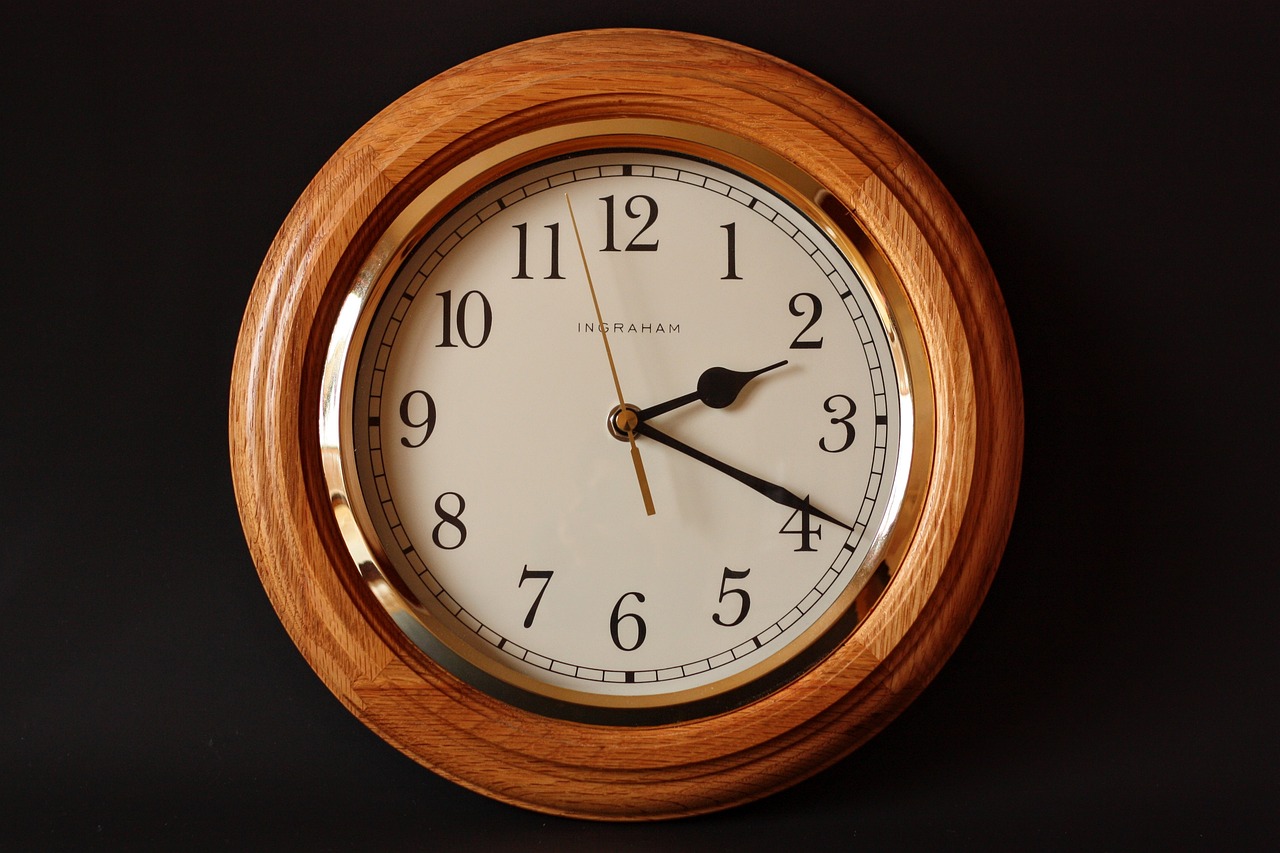
Choosing the Right Wood
When embarking on your DIY wooden wall clock journey, the first and perhaps most critical decision you'll face is . This choice not only influences the aesthetics of your clock but also its durability and overall character. Think of wood as the canvas for your masterpiece; the type you select will set the tone for the entire project. So, what should you consider? Let's dive into the various types of wood that can elevate your clock from ordinary to extraordinary.
Each type of wood brings its own unique grain patterns, colors, and textures to the table. For instance, maple is known for its light color and fine grain, making it a fantastic choice for a modern, minimalist design. On the other hand, walnut offers a rich, dark hue that can add a touch of elegance and sophistication. If you're after something rustic, consider pine, which is not only affordable but also easy to work with, making it an ideal option for beginners.
Here’s a quick overview of some popular woods you might consider:
| Wood Type | Color | Grain Pattern | Durability |
|---|---|---|---|
| Maple | Light | Fine | Moderate |
| Walnut | Dark Brown | Wavy | High |
| Pine | Yellowish | Knotted | Low |
| Oak | Medium Brown | Open Grain | High |
When selecting wood, also consider the environmental impact. Opting for sustainably sourced wood not only helps the planet but can also add a story to your clock. Imagine telling your guests that your beautiful walnut clock came from a sustainably managed forest! So, as you make your choice, think about how the wood aligns with your values and the message you want your decor to convey.
Lastly, don't forget about the finish. The way you finish your wood can significantly alter its appearance. A clear varnish can enhance the natural beauty of the wood grain, while a stain can add depth and character. Experimenting with different finishes can lead to surprising results, turning your clock into a stunning focal point in your home.
In summary, choosing the right wood for your DIY wooden wall clock is a blend of personal preference, functionality, and environmental consciousness. By understanding the characteristics of different woods, you can select the perfect one that not only meets your aesthetic desires but also stands the test of time. Now, let's move on to the essential tools and materials you'll need to bring your clock to life!
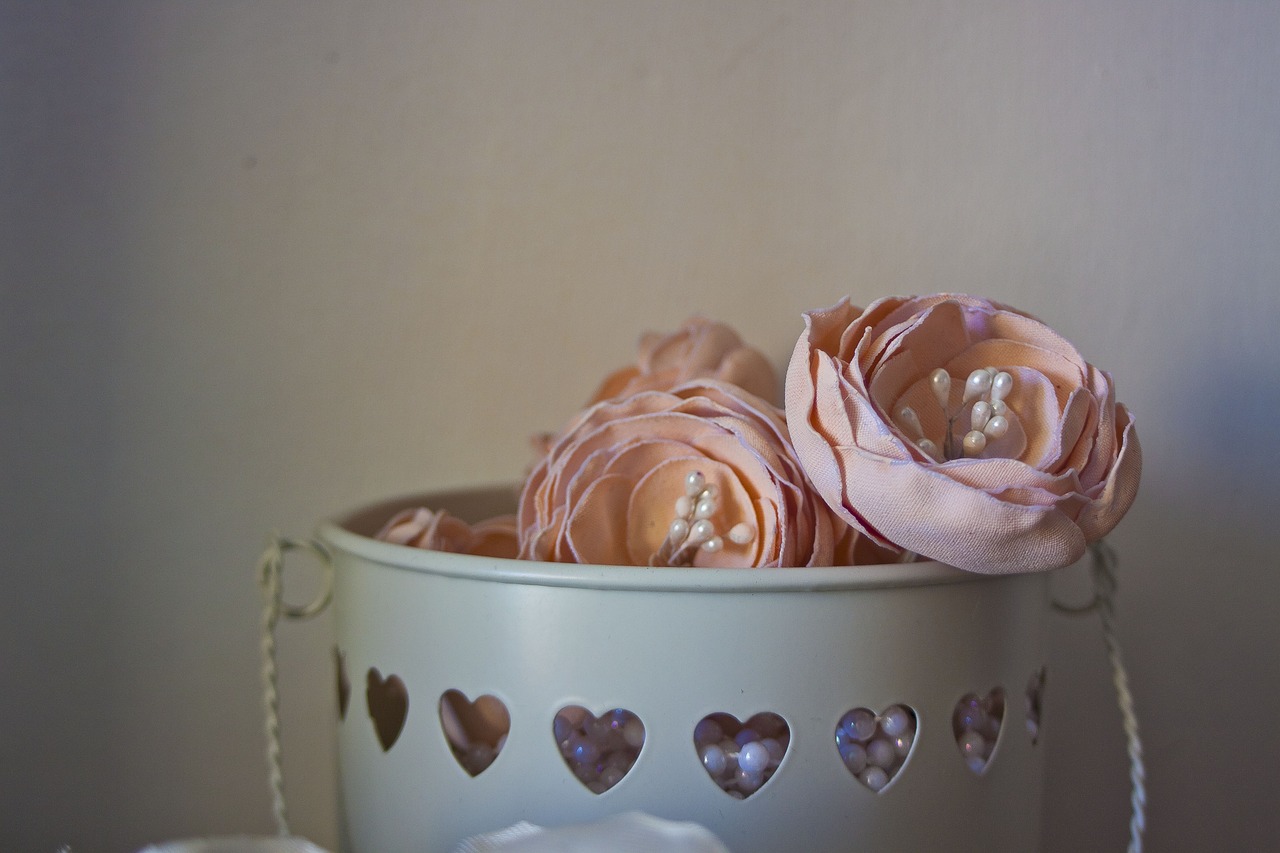
Essential Tools and Materials
Before diving headfirst into your DIY wooden wall clock project, it's crucial to gather all the essential tools and materials you'll need. Think of this step as prepping for a gourmet meal; having everything ready makes the cooking process so much smoother and enjoyable. Whether you’re a seasoned woodworker or a complete novice, understanding what you need will make all the difference in creating a stunning timepiece.
First off, let’s talk about the tools. You’ll want to have a good set of basic woodworking tools at your disposal. Here’s a quick rundown of what you should consider:
- Saws: A jigsaw or circular saw will be essential for cutting your wood to size. The choice depends on your comfort level and the complexity of your design.
- Drills: A power drill is necessary for creating holes for the clock mechanism and any other features you plan to add.
- Sanders: Sanding your wood will give it a smooth finish, making it not only look better but also feel better to the touch.
- Measuring Tools: A tape measure and square will help you ensure your cuts are precise, which is critical for a well-functioning clock.
But wait, there’s more! You also need to consider the materials you’ll be using for the clock mechanism. This is the heart of your clock, and it’s important to choose wisely. Here’s a quick table to summarize the key components you’ll need:
| Component | Description |
|---|---|
| Clock Movement | The mechanism that powers the clock hands. You can find various types online or at a craft store. |
| Clock Hands | These come in different styles and sizes, so choose ones that fit your design. |
| Battery | Most clock movements are battery-operated, so don’t forget to grab a battery! |
| Mounting Hardware | You'll need this to hang your clock securely on the wall. |
Now that you know what tools and materials are essential, it’s time to get excited! Picture yourself crafting a stunning wall clock that not only tells time but also serves as a unique piece of art in your home. Remember, the right tools and materials will pave the way for a successful project, so take the time to gather everything you need before you start. This preparation will allow your creativity to flow freely as you embark on this fun and rewarding DIY journey!
Q: Can I use reclaimed wood for my clock?
A: Absolutely! Reclaimed wood adds character and uniqueness to your clock, making it even more special.
Q: How do I choose the right clock mechanism?
A: It depends on the size of your clock and the style you want. Make sure the movement matches the dimensions of your clock face.
Q: What if I’m not experienced with woodworking?
A: No worries! Start with a simple design and take your time. There are plenty of tutorials online to help you along the way.
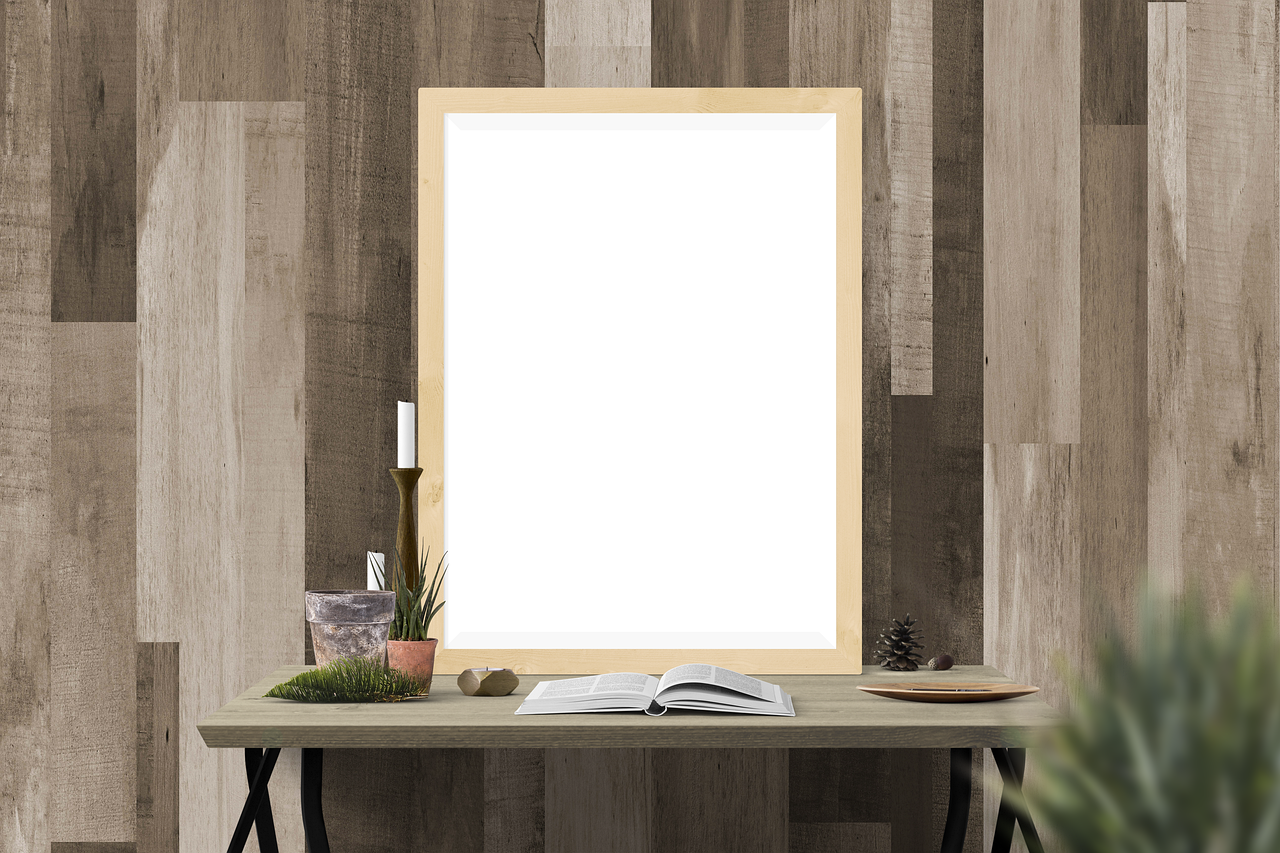
Basic Woodworking Tools
When diving into the world of DIY wooden wall clocks, having the right tools is like having the right ingredients for a delicious recipe. You wouldn't want to bake a cake without measuring cups, right? Similarly, the you choose can make or break your project. Let's explore some essential tools that will help you craft your clock with precision and ease.
First up, the hand saw. This tool is your best friend for making straight cuts in your wood. It's perfect for beginners and allows for greater control compared to power saws. If you're feeling adventurous, you can also explore using a jigsaw for more intricate designs. Next, we have the drill. This is crucial for creating holes for the clock mechanism and any decorative elements you might want to add. A good drill will save you a lot of time and effort, making it a must-have in your toolkit.
Don't forget about the sander. After cutting your wood, you'll want to smooth out those edges to avoid splinters and give your clock a polished look. Whether you choose a power sander or a hand sander depends on your comfort level and the size of your project. Additionally, a square is essential for ensuring that your cuts are straight and your pieces fit together perfectly. Think of it as the measuring tape's trusty sidekick!
Now, if you’re wondering whether to invest in power tools or stick with hand tools, here’s a quick comparison:
| Tool Type | Advantages | Disadvantages |
|---|---|---|
| Power Tools | Faster, more efficient, less physical effort | Can be more expensive, requires safety precautions |
| Hand Tools | Less expensive, more control, great for detailed work | More time-consuming, requires more physical effort |
Ultimately, the choice between power tools and hand tools comes down to your personal preference and the specifics of your project. If you're just starting out, you might want to begin with hand tools to get a feel for woodworking. As you gain experience, you can gradually incorporate power tools into your toolkit.
In addition to these tools, you’ll need some basic materials like wood glue and clamps, which will help you secure your pieces as you assemble your clock. Remember, the right tools not only make your job easier but also enhance the quality of your finished product. So, take your time to gather what you need, and get ready to unleash your creativity!
- What type of wood is best for a DIY clock? - Softwoods like pine are great for beginners, while hardwoods like oak provide durability and a beautiful finish.
- Can I use any clock mechanism for my wooden clock? - Yes, but make sure to choose a mechanism that fits the thickness of your wood and the size of your clock face.
- Is it necessary to sand the wood before painting or staining? - Absolutely! Sanding helps the paint or stain adhere better and gives a smoother finish.
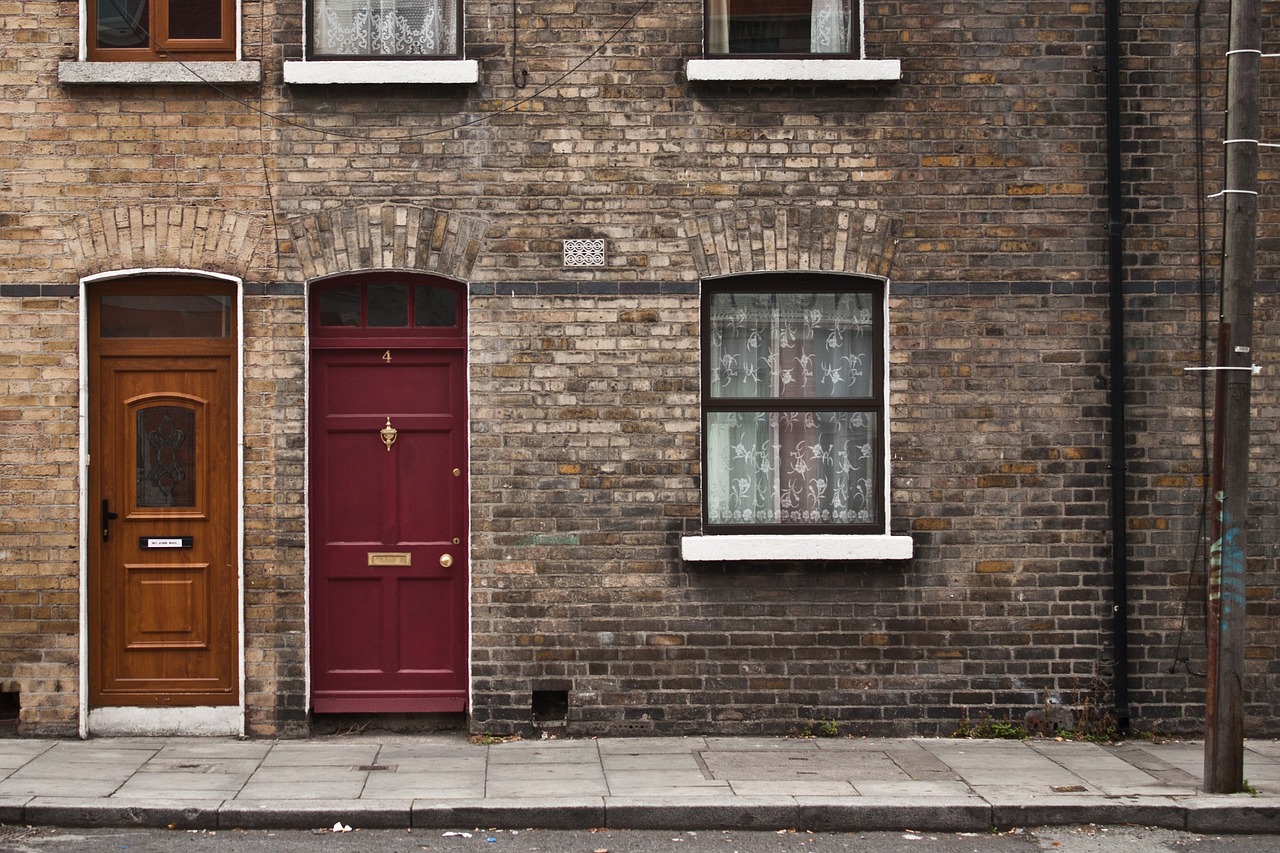
Power Tools vs. Hand Tools
When diving into the world of DIY wooden wall clocks, one of the first decisions you’ll face is whether to use power tools or hand tools. Both options have their unique advantages and drawbacks, and the choice you make can significantly impact your crafting experience and the final product. Let’s break it down!
Power tools are the speed demons of the woodworking world. They can cut, drill, and sand with precision and efficiency that hand tools might struggle to match. For instance, a power saw can slice through wood like butter, saving you time and effort, especially if you’re working with thicker materials. However, they do come with a steeper learning curve and often require a bit more safety awareness. If you’re a beginner, the roar of a power tool can be intimidating, and mishaps can happen if you’re not careful.
On the flip side, hand tools offer a more traditional approach to woodworking. Tools like hand saws, chisels, and hand drills allow for greater control and finesse, making them ideal for intricate designs. Using hand tools can also be a more meditative experience, connecting you to the craftsmanship of your project in a way that power tools sometimes don’t. However, they do require more physical effort and can be time-consuming, especially for larger projects.
To help you weigh your options, here’s a quick comparison:
| Aspect | Power Tools | Hand Tools |
|---|---|---|
| Speed | Fast and efficient | Slower, requires more effort |
| Precision | High, but can vary based on tool quality | Very high, allows for fine detail work |
| Learning Curve | Steeper, may require training | Gentler, more intuitive for beginners |
| Cost | Generally more expensive | Usually less expensive, but quality varies |
| Portability | Less portable, requires power source | Highly portable, no power needed |
Ultimately, the choice between power tools and hand tools comes down to your personal style and project needs. If you thrive on speed and efficiency, power tools may be your best bet. But if you appreciate the art of woodworking and enjoy the process of crafting, hand tools could provide a fulfilling experience. Many DIY enthusiasts find a balance, using both types of tools to capitalize on their strengths. So, what’s it going to be for your wooden wall clock? The choice is yours!
- Do I need a lot of tools to start making a wooden wall clock?
No, you can start with just a few essential tools. As you gain experience, you can expand your toolkit.
- Can I use reclaimed wood for my clock?
Absolutely! Reclaimed wood can add character and uniqueness to your clock.
- What is the best wood for beginners to use?
Pine is often recommended for beginners due to its softness, ease of cutting, and affordability.
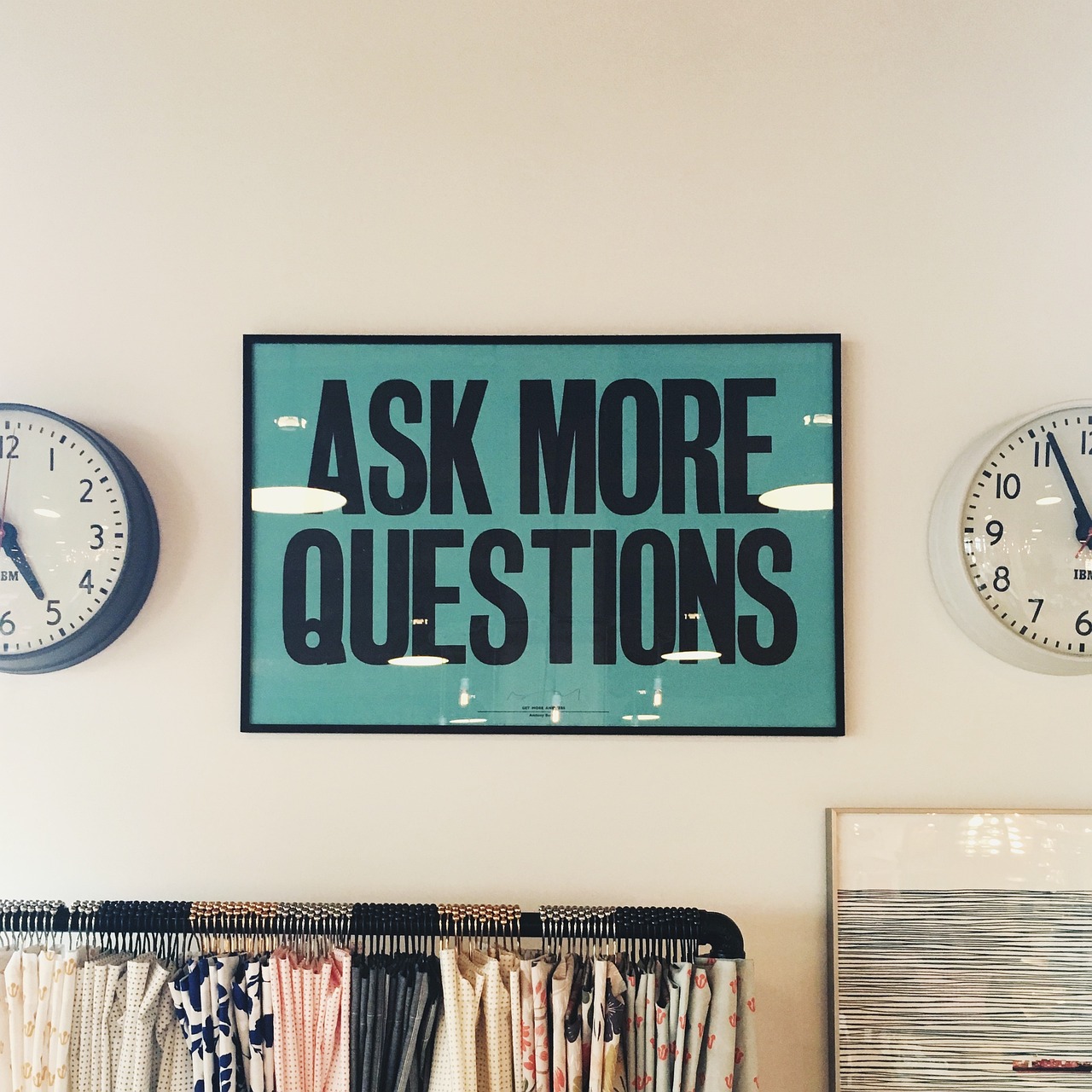
Materials Needed for Clock Mechanism
When embarking on the exciting journey of creating your own wooden wall clock, it's essential to understand the materials needed for the clock mechanism. This is the heart of your clock, ensuring that it not only looks beautiful but also functions perfectly. The clock mechanism is what keeps time, and without the right components, your DIY project could end up being just a decorative piece rather than a functional timepiece.
To start, you will need a clock movement mechanism, which includes the clock motor and hands. The mechanism is typically available in various sizes, so it's crucial to choose one that fits the dimensions of your clock face. You can find these mechanisms at craft stores or online retailers. Along with the movement, you will also need a battery to power it. Most clock movements operate on a single AA battery, which is convenient and easy to replace.
In addition to the clock movement, consider the clock hands. They come in various styles and lengths, allowing you to customize the look of your clock. When selecting hands, make sure they are compatible with the mechanism you've chosen. The clock face itself can be made from wood or any other material you prefer, but remember that the thickness will affect the length of the clock hands you need.
Here’s a quick rundown of the essential materials for your clock mechanism:
- Clock movement mechanism: The core component that drives the clock.
- Clock hands: These come in different styles and sizes.
- Battery: Usually a single AA battery.
- Clock face: The surface on which you’ll attach the hands and numbers.
To ensure your clock not only tells time but also complements your home decor, you might also consider adding numbers or markers on the clock face. These can be painted, engraved, or even made from other materials like metal or acrylic, depending on your design preferences. Remember, the way you present the time can enhance the overall aesthetic of your clock.
Lastly, don’t forget about the hanging hardware. Whether you plan to mount your clock on a wall or place it on a shelf, having the right hardware is essential for stability and safety. Look for brackets or hooks that can support the weight of your clock, ensuring it stays secure in its place.
By gathering these essential materials and understanding their functions, you're well on your way to creating a stunning wooden wall clock that serves as both a practical timekeeper and a beautiful piece of art in your home. So, roll up your sleeves and get ready to unleash your creativity!
Q: What type of wood is best for making a wooden wall clock?
A: The best type of wood depends on your style preference. Popular choices include oak for durability, pine for a lighter look, and birch for a smooth finish.
Q: Can I use any clock mechanism for my DIY clock?
A: Not all clock mechanisms are the same. Make sure to choose one that fits the size and weight of your clock face.
Q: How do I ensure my clock keeps accurate time?
A: Use a high-quality clock movement and replace the battery regularly. Avoid placing the clock in areas with extreme temperature changes.
Q: What if I want a unique design?
A: Feel free to get creative! You can paint, stain, or even decoupage your clock face to match your decor style.
Q: Do I need any special skills to make a wooden wall clock?
A: Basic woodworking skills are helpful, but many DIYers successfully create clocks with just a little patience and practice.

Choosing Clock Designs
When it comes to crafting your own wooden wall clock, the design you choose is not just a matter of aesthetics; it’s a reflection of your personal style and the vibe you want to create in your space. Imagine walking into a room and being greeted by a stunning clock that not only tells time but also tells a story. So, how do you decide on the perfect design? Well, let’s dive into some popular styles that can inspire your creativity.
First, think about the overall theme of your home. Are you leaning towards a modern, minimalist look, or do you prefer something rustic and cozy? Here are a few design ideas to get your creative juices flowing:
- Minimalist: Clean lines and simple shapes define this style. A minimalist clock can be as straightforward as a circular piece of wood with numbers etched in a sleek font.
- Rustic: Embrace the charm of nature with a clock that features raw edges and a natural wood finish. This style brings warmth and character to any room.
- Industrial: Think metal accents paired with reclaimed wood. An industrial clock can have a rugged look that perfectly complements a loft-style apartment.
- Vintage: Channel nostalgia with a design that incorporates ornate details or distressed finishes. A vintage clock can serve as a beautiful statement piece.
- Artistic: If you’re feeling adventurous, why not create a clock that doubles as a piece of art? Use bold colors, unique shapes, or even mixed media to express your creativity.
Each of these styles can be tailored to fit your personality and the specific ambiance of your home. Consider how the clock will interact with other decor elements. For instance, if your walls are painted in soft, muted tones, a vibrant clock can serve as a stunning focal point. Conversely, if your space is already filled with color, a more subdued design can provide balance.
Additionally, think about the functionality of your clock. Do you want it to be a simple timekeeper, or do you envision it as a conversation starter? For example, a clock featuring quirky designs or playful elements can become an engaging topic when guests arrive. Remember, the goal is to create something that not only serves its purpose but also enhances the overall aesthetic of your home.
In conclusion, choosing the right clock design is an essential step in your DIY project. It’s not just about telling time; it’s about creating a piece that resonates with you and complements your living space. So, take a moment to reflect on your style preferences and the atmosphere you want to cultivate. With the right design, your wooden wall clock can become a cherished part of your home decor.
Q: What type of wood is best for making a wall clock?
A: The best type of wood depends on the style you want to achieve. Hardwoods like oak and maple are durable and offer a refined look, while softer woods like pine can provide a more rustic feel. Consider how the wood’s grain and color will complement your design.
Q: How do I ensure my clock is accurate?
A: To ensure accuracy, invest in a quality clock mechanism. Make sure to follow the manufacturer's instructions for installation, and regularly check the time to make any necessary adjustments.
Q: Can I personalize my clock design?
A: Absolutely! Personalization is what makes your DIY project special. You can add initials, quotes, or even family photos to make your clock uniquely yours.
Q: What tools do I need to create a wooden wall clock?
A: Basic tools include a saw, drill, sandpaper, and a clock mechanism. Depending on your design, you may also need paint or stain for finishing touches.
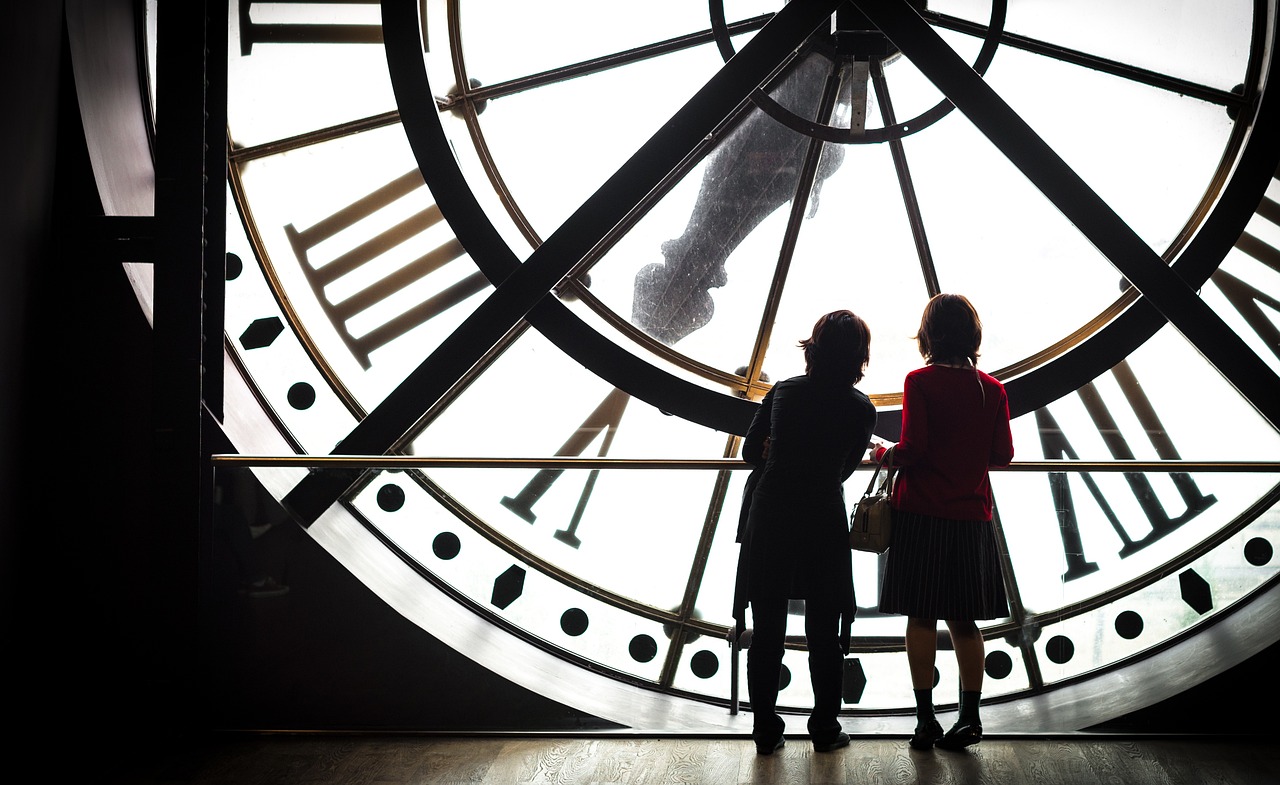
Steps to Create Your Clock
Creating your own wooden wall clock is an exciting journey that combines creativity and craftsmanship. The process can be broken down into several key steps that will guide you from the initial concept to the final product. First and foremost, it’s essential to gather all your materials and tools before diving into the project. Having everything at hand will save you time and keep your workflow smooth. Imagine trying to cook a gourmet meal without having your ingredients prepped; it just doesn’t work! So, let’s roll up our sleeves and get started.
Once you have your materials ready, the first step is measuring and cutting the wood. Accuracy is crucial here. You want to ensure that all your pieces fit together perfectly. Using a measuring tape, mark the dimensions on your wood, and double-check your measurements. A good rule of thumb is to measure twice and cut once. When it comes to cutting, a circular saw or a jigsaw can be your best friends. If you're new to this, don’t hesitate to practice on scrap wood first. This will help you get a feel for the saw and improve your cutting technique.
After you’ve cut your pieces, it’s time to move on to assembling your clock. Start by laying out all the pieces on a flat surface to visualize how they will come together. This is where your creativity can shine! If you’re using a clock mechanism that requires a specific arrangement, make sure to follow the instructions that come with it. Begin by attaching the clock face to the backing. You can use wood glue or screws for this, depending on your design. Once the face is secure, you can install the clock hands. This part can be a bit tricky, so take your time and ensure everything is aligned correctly. You want your clock to not only look good but also function well.
As you assemble, consider adding some personal touches. Maybe you want to paint it a bold color or leave it natural with a nice finish. The finishing touches can truly elevate your clock from a simple DIY project to a stunning piece of art. You can also think about adding embellishments like numbers or even artwork that reflects your personality. The beauty of DIY is that it’s entirely up to you!
Finally, once everything is assembled and finished, don’t forget to give your clock a test run. Hang it on the wall, set the time, and admire your handiwork. It’s incredibly satisfying to see something you created with your own hands ticking away on your wall, bringing both functionality and a unique style to your home.
- What type of wood is best for making a wall clock?
Hardwoods like oak, maple, or walnut are excellent choices due to their durability and aesthetic appeal.
- Do I need any special tools to make a wooden clock?
Basic woodworking tools like saws, drills, and sanders are sufficient, but power tools can make the job easier.
- How do I ensure my clock keeps accurate time?
Using a quality clock mechanism and properly assembling it will help maintain accurate timekeeping.
- Can I customize my clock design?
Absolutely! Personalization is one of the best parts of DIY projects. Feel free to paint, stain, or add embellishments as you like.

Measuring and Cutting the Wood
When it comes to crafting your own wooden wall clock, measuring and cutting the wood accurately is paramount. Think of this step as the foundation of a house; if your measurements are off, the entire structure can be compromised. Start by gathering your materials and tools. You'll need a reliable measuring tape, a square for right angles, and a saw that suits your wood type. Don't rush this process; precision is key!
Begin by determining the size of your clock. Do you envision a grand statement piece or a subtle accent? Once you have a size in mind, use your measuring tape to mark the wood. A good trick is to measure twice and cut once—this old adage holds true in woodworking. Use your square to ensure that your lines are straight and that your cuts will be precise. If you're feeling a bit unsure, practice on a scrap piece of wood first. This can save you from costly mistakes!
Now, let’s talk about cutting. Depending on the thickness of the wood, you may choose between a hand saw or a power saw. For thicker pieces, a circular saw or jigsaw might be your best bet. As you cut, keep your hands steady and follow the marked line closely. Remember, your goal is to create clean edges that will fit together seamlessly later on. If you find that the edges are a bit rough, don’t worry! A sander will smooth things out and prepare your pieces for assembly.
Once you’ve cut your pieces, it’s wise to do a quick fit test. Lay out the pieces as they will be assembled, ensuring everything aligns perfectly. If any adjustments are needed, now is the time to make them. Getting this right will pay off when you start putting your clock together. After all, a well-measured and cut piece of wood is like a well-written story—it flows easily and captivates the audience!
In summary, measuring and cutting the wood for your DIY wooden wall clock is a crucial step that requires patience and precision. By taking the time to do it right, you’ll set yourself up for success in the assembly phase. Remember, woodworking is as much about the journey as it is about the final product. Enjoy the process, and soon you’ll have a beautiful clock that not only tells time but also tells your personal story!
- What type of wood is best for a wall clock? - Hardwoods like oak or maple are excellent for durability, while softer woods like pine are easier to work with.
- Do I need special tools for cutting wood? - Basic tools like a saw, measuring tape, and sandpaper are sufficient for most DIY clock projects.
- How can I customize my clock? - You can use paint, stains, or even embellishments like decals to make your clock unique.
- Is it difficult to assemble the clock mechanism? - Not at all! Most clock mechanisms come with straightforward instructions that make assembly easy.

Assembling Your Clock
Assembling your wooden wall clock is where the magic truly happens! It's like piecing together a beautiful puzzle that not only tells time but also showcases your creativity. Once you've meticulously measured and cut your wood pieces, it's time to bring them together in a way that reflects your unique style. Start by laying out all your components on a flat surface, ensuring everything is within reach. This way, you can visualize how your clock will come together before you begin the actual assembly.
Begin with the base of your clock, which will serve as the foundation for the rest of the components. If you're using a circular piece of wood, make sure it's sanded down to a smooth finish to avoid splinters and ensure a polished look. Once your base is ready, it’s time to attach the clock mechanism. This is the heart of your clock, and it’s crucial to install it correctly to ensure accurate timekeeping. Most clock mechanisms come with a simple set of instructions, but here’s a quick overview of the steps:
- Locate the center of your clock base and drill a hole that matches the size of your clock mechanism's shaft.
- Insert the clock mechanism through the hole from the back side of the base.
- Secure it in place using the provided nut or washer, ensuring it’s tight enough to hold the mechanism firmly.
With the mechanism in place, you can start attaching the clock hands. This step is where you can really get creative! Whether you opt for sleek, modern hands or something more ornate, make sure they are aligned properly. Start by placing the hour hand first, followed by the minute hand, and finally, the second hand if your design includes one. Take a moment to step back and admire your work. This is a crucial point where you can adjust the positioning of the hands to ensure they are not touching each other and can move freely.
Next, consider adding numbers or markers to your clock. You can paint them directly onto the wood, use stickers, or even carve them for a more rustic look. The placement of these markers can dramatically affect the overall aesthetic of your clock. For a classic look, position the numbers at 12, 3, 6, and 9, while for a more modern touch, you might choose to go without numbers altogether, relying on simple tick marks instead.
Finally, once everything is securely attached and you're happy with the arrangement, it’s time to give your clock a final inspection. Check for any loose components and tighten them as necessary. If you’ve opted for any embellishments, such as decorative elements or paint, make sure they are fully dry and securely attached. This is your chance to add that final touch of personality to your clock, making it a true reflection of your style.
In summary, assembling your wooden wall clock is not just about putting pieces together; it's about creating a functional piece of art. With a bit of patience and creativity, you’ll end up with a stunning timepiece that enhances your home decor and showcases your DIY skills.
Q: What type of wood is best for making a wall clock?
A: The best type of wood depends on your desired aesthetic and durability. Popular choices include oak for its strength and beauty, pine for its affordability, and birch for its smooth finish.
Q: Can I use any clock mechanism for my DIY clock?
A: While you can use various clock mechanisms, ensure that the one you choose fits the size of your clock face and is compatible with the thickness of the wood.
Q: How can I personalize my clock further?
A: You can personalize your clock by choosing unique hands, adding custom numbers, or even painting or staining the wood in colors that match your home decor.
Q: Is it difficult to assemble a wooden wall clock?
A: Not at all! With the right tools and a bit of guidance, even beginners can successfully assemble a wooden wall clock. Just take your time and enjoy the process!
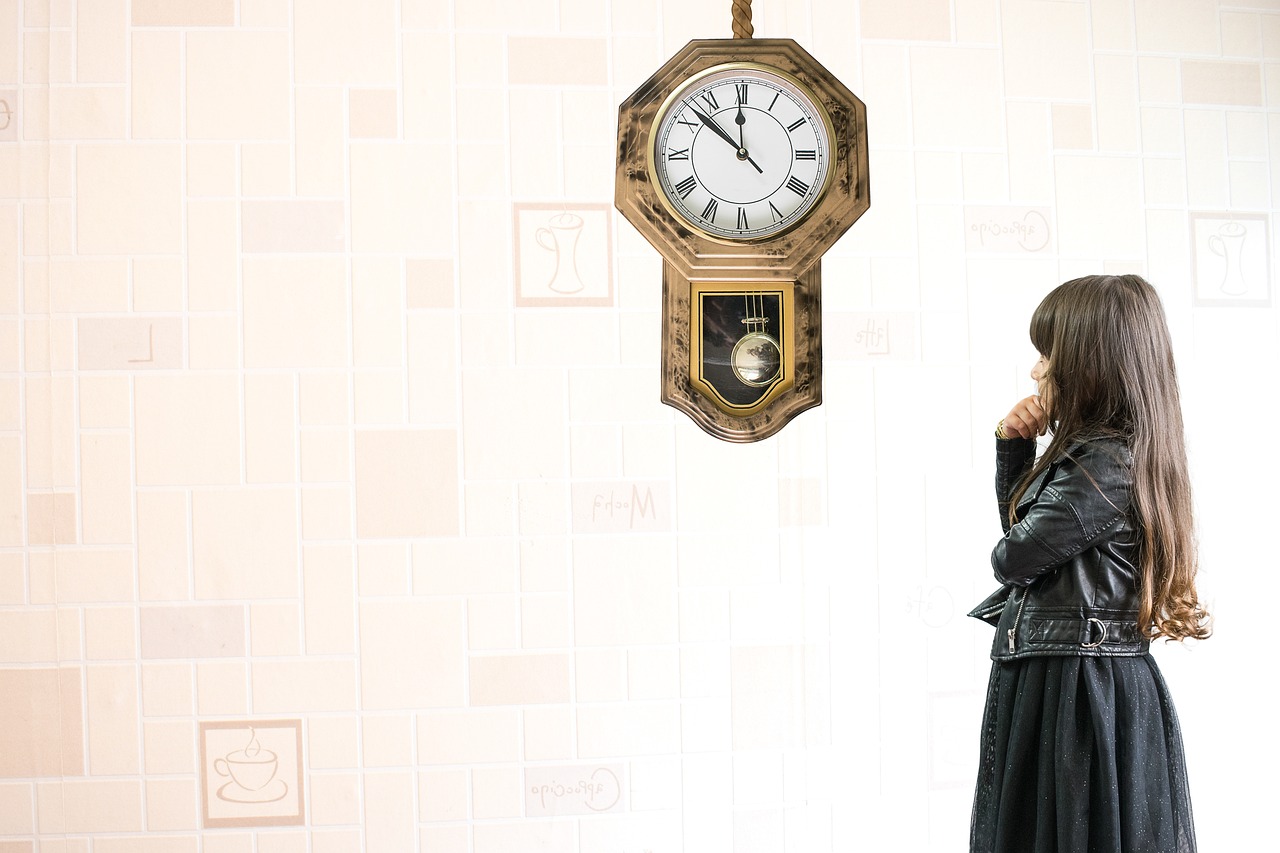
Finishing Touches and Customization
Once you've crafted your wooden wall clock, it’s time to give it those all-important finishing touches that will not only enhance its appearance but also reflect your personal style. Think of this stage as the icing on the cake; it’s where your clock transforms from a simple timepiece into a stunning piece of art that can elevate your home decor. Whether you prefer a rustic, vintage look or a sleek, modern vibe, the choices you make during this phase can truly make your clock stand out.
First, consider the type of finish you want to apply. There are several options available, each offering a unique aesthetic and level of protection for your wood. Here’s a brief overview:
| Finish Type | Description | Best For |
|---|---|---|
| Stain | Enhances the natural grain of the wood while adding color. | Rustic or traditional designs |
| Paint | Completely covers the wood, allowing for vibrant colors and patterns. | Modern or playful designs |
| Varnish | Provides a protective layer while maintaining the wood's natural look. | Durability and protection |
| Oil | Penetrates the wood to enhance its natural beauty and provide moisture resistance. | Natural finish lovers |
After selecting your finish, you can also add some personalized elements to make your clock truly one-of-a-kind. Consider incorporating decorative features such as:
- Engravings: Personal messages or designs can be engraved onto the wood for a heartfelt touch.
- Stickers or Decals: These can add fun, whimsical designs that reflect your personality.
- Additional Textures: Adding materials like twine, metal accents, or even fabric can enhance the tactile quality of your clock.
Another great way to customize your clock is by experimenting with the clock hands and numbers. You can find various styles, from sleek and minimalist to ornate and vintage. Choosing contrasting colors for the hands and numbers against the clock face can help make the time easier to read while adding a pop of visual interest.
Finally, think about where your clock will be displayed. The right placement can significantly impact how your clock is perceived. Hanging it at eye level in a well-lit area can make it a focal point of the room. You might even consider creating a gallery wall with your clock as the centerpiece, surrounded by other art pieces or photographs that complement its style.
In conclusion, the finishing touches and customization options for your DIY wooden wall clock are where you can truly let your creativity shine. With the right materials and a bit of imagination, you can create a stunning timepiece that is not only functional but also a beautiful addition to your home decor.
Q: What is the best type of wood for a wall clock?
A: Hardwoods like oak or maple are excellent choices due to their durability and beautiful grain. However, softer woods like pine can also work well for a more rustic look.
Q: How do I ensure my clock keeps accurate time?
A: Make sure to purchase a quality clock mechanism and follow the installation instructions carefully. Regularly check and replace the battery to maintain accuracy.
Q: Can I use any type of paint on my wooden clock?
A: It's best to use paint specifically designed for wood surfaces, as this will adhere better and provide a longer-lasting finish.
Q: How can I protect my clock from damage?
A: Applying a protective finish like varnish or oil can help guard against scratches and moisture, extending the life of your clock.
Frequently Asked Questions
- What type of wood is best for making a DIY wooden wall clock?
Choosing the right wood can make all the difference! Popular options include oak, pine, and birch. Oak is durable and has a beautiful grain, while pine is lightweight and easy to work with. Birch offers a smooth finish that's perfect for painting or staining. Ultimately, it depends on your style and the look you want to achieve!
- Do I need any special tools to create a wooden wall clock?
Not necessarily! Basic woodworking tools like a saw, drill, and sander will do the trick. If you want to go the extra mile, power tools can speed up the process and provide more precision. Just make sure you're comfortable using them, as safety should always come first!
- Can I customize my wooden clock design?
Absolutely! The beauty of DIY projects is that you can let your creativity shine. Whether you want a minimalist look with clean lines or something more intricate with patterns and embellishments, the choice is yours. Don’t be afraid to experiment with different finishes, colors, and styles!
- What materials do I need for the clock mechanism?
You'll need a clock movement kit, which usually includes the mechanism, clock hands, and a mounting hardware. You can find these kits online or at craft stores. Make sure to choose one that fits your clock face size to ensure everything works perfectly!
- How do I ensure my clock is accurate?
To keep your clock ticking accurately, use a high-quality clock mechanism. After assembling, check the timekeeping by setting it and observing for a few days. If it starts to lag or speed up, you may need to adjust or replace the mechanism. Regular maintenance can help keep it on time!
- What finishing touches can I add to my clock?
The possibilities are endless! You can opt for stains, paints, or even decoupage to give your clock a unique flair. Consider adding numbers, designs, or even personal photos for a customized touch. Just remember to seal everything with a protective finish to keep it looking great!



















